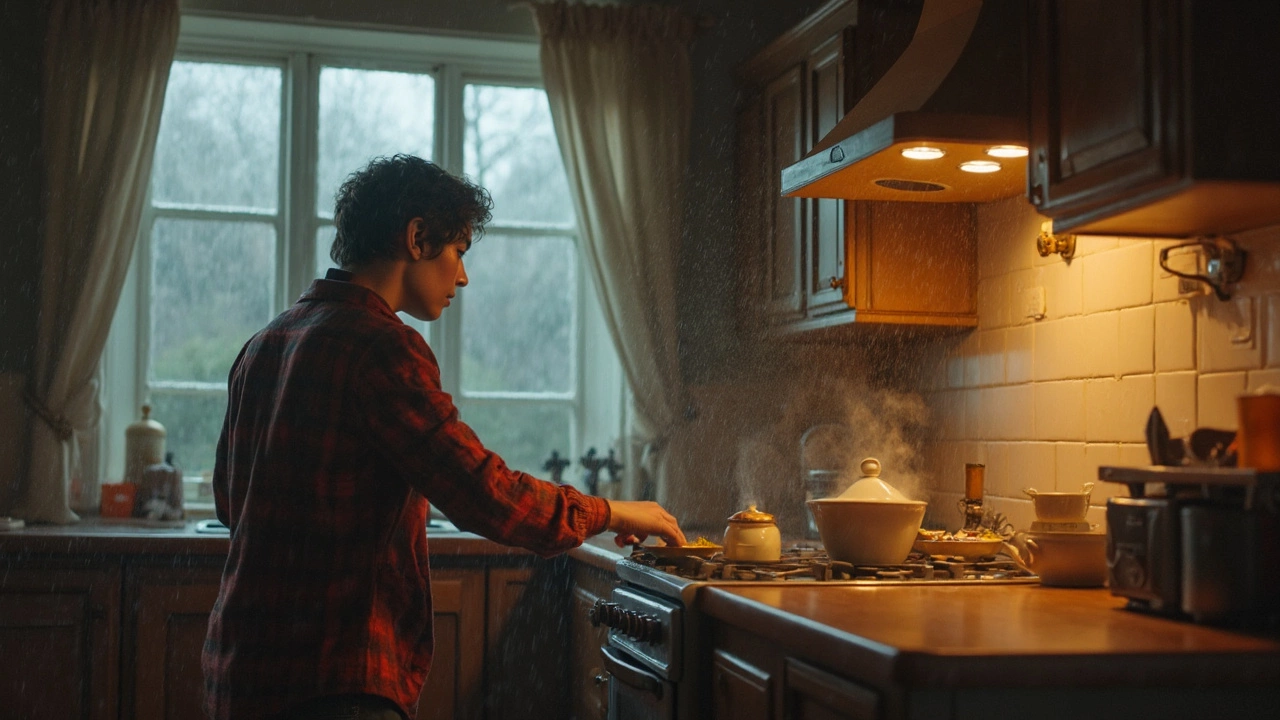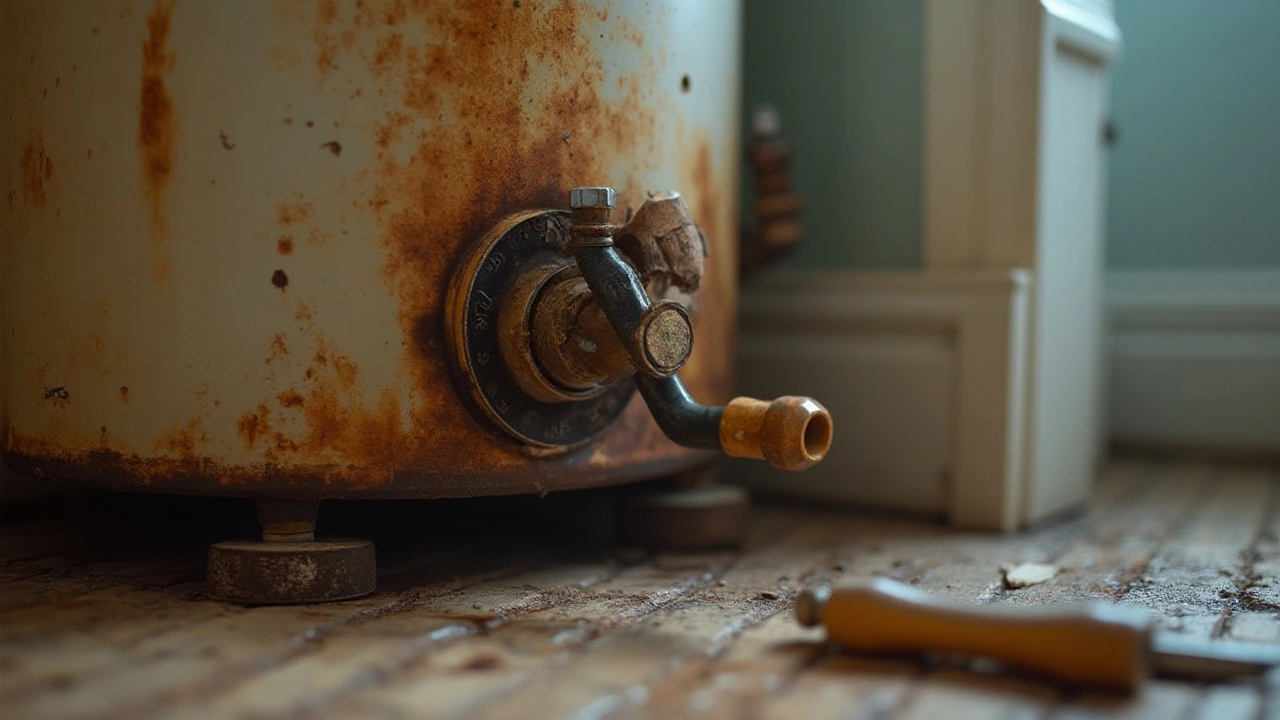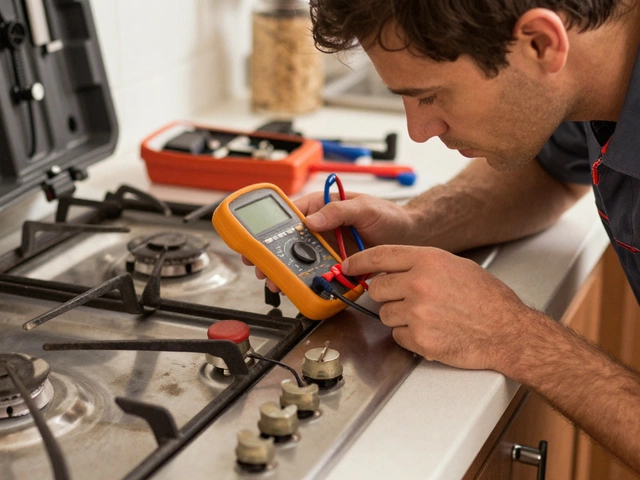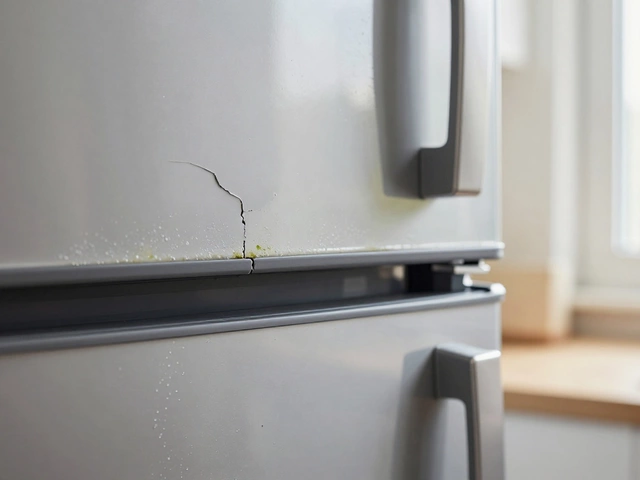Nothing throws off your morning routine like stepping into an ice-cold shower. If your hot water heater stops working, don’t panic—most problems have simple clues. Before reaching for the phone or Google, check the basics. Is your hot water heater plugged in? For an electric model, look at the breaker box; you’d be surprised how often a flipped switch causes the problem. Running on gas? Make sure the gas valve is open and you paid the bill—hey, it happens.
If power and gas look good, move closer and listen for odd noises or sniff out any funky smells. Catching that whiff of rotten eggs? That’s a possible gas leak, and you should step away fast and call the gas company. Otherwise, keep investigating. Is there water pooling around? A leak can be sneaky—sometimes it’s just a loose connection, but other times it hints at a tank problem.
- Check the Power and Fuel Supply
- Look for Signs of Leaks or Damage
- Inspect the Thermostat and Temperature Settings
- Check the Heating Elements or Pilot Light
- When to Call a Professional
Check the Power and Fuel Supply
Before you go any further, double check the basics. Most hot water heater problems start or end with the power or gas supply. For an electric heater, head over to your breaker box and see if the circuit for your heater has tripped. This happens a lot—especially if you recently had a storm or power surge. Flip the breaker off and back on to test.
Gas heaters have their own quirks. Make sure the gas valve to the unit is open. If you can’t hear the usual whoosh when the heater tries to ignite, there could be no gas getting in. Sometimes, someone bumps the valve accidentally while moving stuff around. If you use propane, check the tank level. You’d be surprised how quickly a family can run through a tank and not notice it’s empty.
- If the water heater runs on natural gas, see if other gas appliances like the stove are working. If nothing works, you may have a bigger utility issue.
- If it’s electric, plug another appliance into the same outlet (if it’s visible) to see if the outlet is dead.
- An old or faulty power cord can also cut power to the water heater. Check for damage or signs of burning.
| Type | Common Issues | Quick Fix |
|---|---|---|
| Electric | Tripped breaker, faulty outlet | Reset breaker or test outlet |
| Gas (Natural or Propane) | Closed gas valve, empty tank | Open valve or refill tank |
One last thing—don’t forget to look for a reset button on electric models. Usually, it’s a red button near the thermostat. Just press and hold it for a few seconds. That alone can solve more problems than you’d think. If your hot water heater stops working even after trying these tricks, move on to the next set of checks. Keep an eye and ear out for anything out of the ordinary.
Look for Signs of Leaks or Damage
If your hot water heater isn’t working, leaks or visible damage are huge warning signs. Water under or around the tank? That’s not normal. Even a small puddle can mean trouble, and ignoring it can lead to expensive water and energy bills—or worse, a flooded home. About 70% of water heater failures happen because of leaks that start small and get worse if nobody steps in early.
Start by checking these spots:
- Water heater base – Look for water pooling at the very bottom or dripping off the sides.
- Pipes and connections – Feel around for wet spots or corrosion on fittings.
- Pressure relief valve – Sometimes a faulty valve spits out water. A little moisture is normal, but any steady drip or puddle is a red flag.
- Storage tank body – Rusty streaks or bubbling paint could mean there’s water inside the walls of the tank.
Here’s a quick reference table to help you spot what’s wrong:
| Sign | Possible Cause | Action |
|---|---|---|
| Puddle under tank | Cracked tank or loose connection | Turn off water/power, call a tech |
| Damp pipes/fittings | Leaky pipes or rusted fittings | Tighten fittings, replace if needed |
| Rusty water from tap | Tank corrosion | Check tank age, likely needs replacement |
| Bubbles on tank paint | Internal leak | Shut off heater, check warranty |
If you see any damage, don’t just mop it up and hope for the best. A leaky heater isn’t just annoying—left alone, it can ruin floors, walls, and even cause dangerous mold growth. Quick tip: most heaters last 8–12 years, so if yours is getting up there in age and these signs pop up, replacement could be the smarter move.

Inspect the Thermostat and Temperature Settings
Once you’ve ruled out power or gas issues, the next place to poke around is your thermostat. Hot water heaters use a thermostat to tell the unit how hot you want your water. Sounds obvious, but it can get bumped down without you noticing—especially if kids or roommates are around.
Most electric water heaters have their thermostats hidden behind a metal panel, usually with a small screw or two. Safety first: flip the breaker before you start poking around. Once open, you’ll see a dial that usually ranges from 90°F to 150°F. The sweet spot? Around 120°F. That temp kills germs and keeps you from getting scalded. If the setting is too low, you’ll just get lukewarm water.
- Check that the thermostat is set to at least 120°F.
- If it’s set correctly but water is still cold, try bumping it up a few degrees and wait about an hour.
- If you have two thermostats (common in tall electric tanks), be sure both are the same. If they’re set wildly apart, your hot water can run out too soon.
On a gas heater, you’ll usually find the thermostat as a simple knob right outside the tank. Don’t crank it all the way up—140°F wastes energy and can actually burn you.
Here’s a quick comparison of heater settings and safety:
| Temperature Setting (°F) | Legionella Growth | Scalding Risk | Energy Use (Typical) |
|---|---|---|---|
| 100°F | High | Low | More Efficient |
| 120°F | Low | Minimal | Balanced |
| 140°F | Lowest | High | Less Efficient |
If you change the dial and nothing happens after a while, there could be a faulty thermostat or heating element inside. That’s when most folks reach out to a water heater repair pro, unless you’re handy with a multimeter. Swapping out a busted thermostat is usually cheaper than replacing the whole heater—but don’t mess with wiring unless you know what you’re doing. That’s a shock you’ll want to avoid.
Check the Heating Elements or Pilot Light
If your water heater is electric, the heating elements are the main players. They look like thick metal rods that stick into the tank. Their job is simple—heat up the water. But they do go bad. If you’re not getting any hot water, or it switches between hot and cold, there’s a good chance an element is done for.
First things first: always turn off the power at the breaker before touching anything. Once that’s handled, take off the access panels (usually there are two) and peel back the insulation. You should see wires going to the heating element and the thermostat. Using a basic multimeter, you can check for continuity—if the reading says “open” or “infinite,” that element needs swapping out. Swapping isn’t as hard as it sounds, and replacement elements are sold at nearly every hardware store.
Now, if you have a gas water heater, things run differently. Look for the pilot light—it’s the tiny blue flame under the tank. If it’s out, you’ll have nothing but cold showers. Relighting it might solve everything, but always read your manufacturer’s instructions. Usually, you turn the gas knob to “pilot,” press and hold, and use an igniter or long lighter. Hot water heater stops working? The pilot light is often the sneaky culprit.
- If the pilot light refuses to stay lit even after following the steps, the thermocouple (the safety sensor) might be bad.
- Soot buildup or dirt can block the burner—try giving it a gentle clean.
- If you smell a strong gas odor, leave the area and call in a pro. Safety first.
For both electric and gas types, these parts are the beating heart of your hot water heater. Keeping them in shape can save you from a lot of cold mornings.
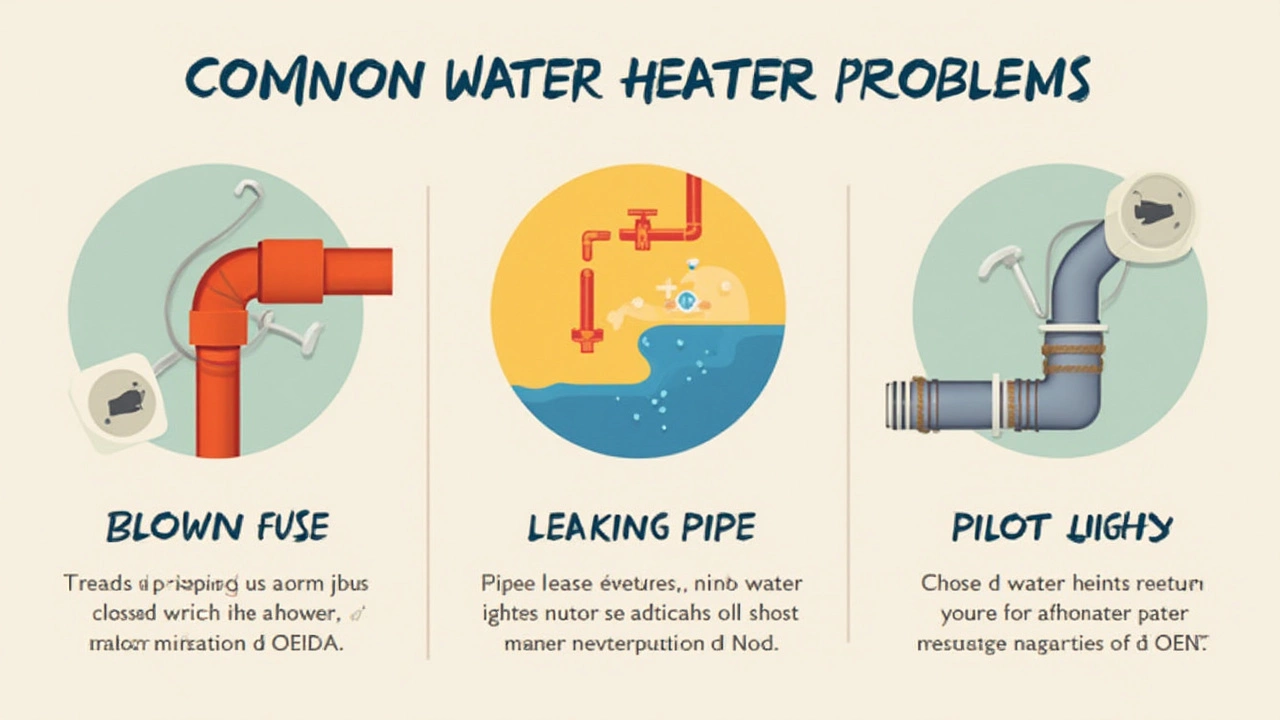
When to Call a Professional
Sometimes, hot water heater problems aren't just a quick DIY fix. It’s smart to know your limits—especially with anything involving gas or major electrical work. Some repairs can get risky fast, or even cause long-term damage if you make a wrong move.
Here’s when you really should call a pro:
- You smell gas or see scorching around the burner area (seriously, don’t mess with this—get everyone out and call your gas provider or emergency services).
- There’s water leaking from the tank itself, not just the pipes or connections. A leaky tank usually means the whole unit’s shot and it’s unsafe to keep using.
- Breaker keeps tripping after you reset it, or the unit sparks. Electrical issues can turn dangerous in a hurry.
- You've tried relighting the pilot light multiple times and it just won't stay on—or the ignition system is making weird clicking sounds.
- You hear loud rumbling or popping when the unit is heating. This might be sediment buildup making the tank overheat and it’s not just an annoying sound—it can lead to total failure.
Even if you know your way around a tool kit, manufacturers recommend calling a licensed technician for any repair that involves opening up the tank, replacing elements, or working on gas lines. Most new water heaters come with warranties that get voided if you mess with it yourself.
Check out this quick look at when to hand it off:
| Problem | DIY? | Call a Pro? |
|---|---|---|
| Tripped breaker, simple reset | Yes | No |
| Pilot light won’t stay lit | If repeated failures | Yes |
| Leaking tank | No | Yes |
| Broken thermostat or heating element | If you have training | Yes, recommended |
| Gas smell or frequent electrical issues | No | Yes |
Water heaters have caused nearly 10,000 emergency calls each year in the U.S. due to gas leaks, according to the National Fire Protection Association. If anything feels unsafe, don’t risk it. Sometimes avoiding a cold shower is less important than avoiding a serious accident.
